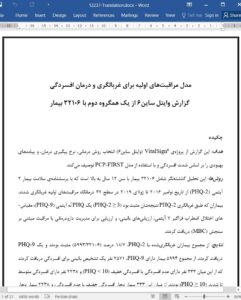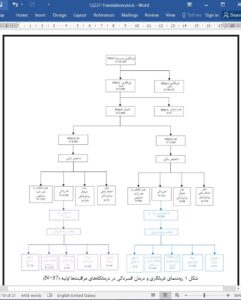Abstract
Purpose This report from VitalSign6 project describes treatment selection, follow-up rates and remission outcomes by initial depression severity using the PCP-FIRST model.
Methods This retrospective analysis included 32,106 patients aged ≥12 years screened with the Patient Health Questionnaire 2-item (PHQ-2) from November 2016 to July 2019 across 37 primary care clinics. PHQ-2 positive-screen patients (PHQ-2 ≥ 3) received 9-item PHQ (PHQ-9) and 7-item Generalized Anxiety Disorder scales, clinician assessments, and evaluation for pharmacotherapy management with measurement-based care (MBC).
Results Of PHQ-2 screened patients, 18.7% (5994/32,106) were positive and received a PHQ-9. Of 5994 patients with PHQ-9, 2571 received a clinical diagnosis of depression of whom, 333 had none-mild depression (PHQ-9 < 10) and 2238 had moderate-severe depression (PHQ-9 ≥ 10). Of the 333 patients with none-mild depression and 2238 patients with moderate-severe depression, 266 and 1929 had at least 18 weeks of data available. Of these, 54.9% (146/266) with none-mild depression and 69.1% (1332/1929) with moderate-severe depression were started on pharmacotherapy. Of the 1478 patients with clinical diagnosis of depression, initiated on pharmacotherapy, 1046 returned for ≥1 follow-up and 616 returned for ≥3 follow-ups over 18 weeks. Of the 1046 patients with ≥1 follow-up visit within 18 weeks, remission rates for patients with mild depression, moderate-severe depression, and overall were 55.6% (66/99), 30% (282/941), and 32.4% (338/1040) respectively.
Conclusions Despite this being a real-world, usual care sample, remission outcomes exceed real world remission rate expectations of 6% in primary care.
1. Introduction
Major depressive disorder (MDD) affects up to 10% of adults in the United States annually, but the use of effective treatments is suboptimal with an average of eight years between onset of MDD to treatment initiation [1,2]. The United States Preventative Services Task Force (USPSTF) has recommended universal screening for depression in individuals 12 years or older [3,4]. Depression screening and treatment in outpatient settings, however, remains poor, with over half of MDD cases being undetected [5–7]. In a national cross-sectional study of U.S. outpatient primary care visits, as few as 3% to 4% involved depression screening [8].
4. Discussion
This report evaluated the treatment selection and follow-up rates for patients with none-mild versus moderate-severe depression and the remission outcomes of patients with mild versus moderate-severe depression treated with MBC pharmacotherapy over 18 weeks across 37 under-resourced primary care clinics in this quality improvement program. As expected, more patients with moderate-severe depression than mildly depressed patients were treated with pharmacotherapy. Overall, of patients treated with MBC pharmacotherapy that returned for at least one follow-up visit and were enrolled for 18 weeks, 32.4% (338/1040) of those with PHQ-9 ≥ 5 reached remission. Of patients with mild depression that returned at least once, 55.6% (56/99) were in remission at 18 weeks, while 30% (282/941) of patients with moderatesevere depression reached remission. Importantly, rates of remission improved with number of follow-ups, with those having at least 3 follow-up visits having the greatest remission rate. Our PCP-First approach results are comparable to real-world collaborative care outcomes and also suggest further benefits if the two approaches are combined [21,22]. Three-fourths of patients diagnosed with depression returned at least once, and overall attrition improved compared to the first VitalSign6 cohort, which were 30.2%, 12.6%, and 11.6% for 1, 2, and ≥ 3 follow-up visits, respectively.











